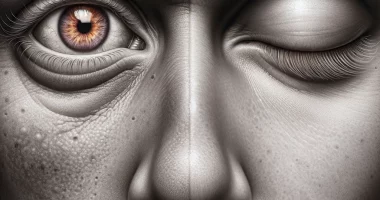Foot drop
Definition
Foot drop is a deformity of the foot with persistent plantar flexion. It is a type of ankle joint contracture. It is characterized by a vicious position of the foot of varying degrees of severity – from a slightly elevated heel to gross deformation, in which the ground touches not the plantar but the rear surface of the toes and metatarsus. It is accompanied by gait disturbance, and there is significant difficulty in standing in bilateral lesions. Diagnosis is based on anamnesis, examination data, radiography, CT, electromyography, and podography. Treatment – orthopedic shoes, redressing, surgical interventions.
General information
Foot drop is a polyetiologic pathological condition that can be congenital or acquired, occurring in isolation or combined with other foot deformities. It can develop at any age and is more often caused by neurological diseases. It causes changes in the length of the foot’s tendons and ligaments, and in severe cases, it causes tarsal bone deformities and joint subluxations. It significantly disrupts the biomechanics of walking and limits the ability to work.
Causes
The congenital deformity is rarely diagnosed, formed due to embryogenesis disorders, and can occur independently or be a component of congenital clubfoot. The following varieties of acquired foot drop are distinguished:
- Neurogenic. Occupies the first place in terms of prevalence. It develops in traumas and diseases of the nervous system: cerebral palsy, poliomyelitis, polyneuritis, myelodysplasia, spastic hemiparesis, damage to the peroneal and sciatic nerves.
- Arthrogenic. It is found in chronic diseases and as an outcome of acute pathologies of the joint in rheumatoid, suppurative, or tuberculous arthritis.
- Myogenic. It is formed against the background of inflammatory processes in the muscles of the foot and lower leg and is detected in improperly fused fractures of ankles and bones of the foot and in lengthening of the lower leg with the Ilizarov apparatus after improper immobilization of the lower segments of the limb.
- Scarring. It is diagnosed in patients with a history of extensive burns, lacerated and crushed wounds with soft tissue defects, and phlegmons of the lower legs.
- Compensatory. It occurs on the short limb in people with different leg lengths and maintains the vertical position of the trunk when walking.
Pathogenesis
The cause of abnormal foot placement is most often paralysis of the anterior tibial muscle group, which causes the flexor thrust to prevail over the extensor thrust. The foot “goes” to the plantar flexion position, which leads to a change in the relationship between the various soft tissue structures, later – to bone deformities, the development of subluxations, and arthrosis of the joints. The arthrogenic form of the foot drop is formed by changes in the configuration of the joints. The other forms arise from relationship disturbances, mainly between soft tissue formations.
Foot drop symptoms
The patient complains of restricted movement, an inability to dorsiflex the foot, and gait disturbances. Visually, the foot is in plantar flexion. The degree of flexion varies considerably from patient to patient—from slight, when the heel is slightly raised above the floor, to pronounced, when the rear surface of the foot is in a straight line with the shin or even bent so much that the support is not on the sole but on the rear of the foot.
Active and passive dorsiflexion of the foot is limited or impossible. When attempting passive flexion, intense tension of the plantar aponeurosis and Achilles tendon is detected. The skin in the heel area is thin and smooth, while in the support area, it is rough, with areas of hyperkeratosis and calluses. A typical gait is observed: the patient raises the leg high, strongly bending the lower leg and thigh to avoid clinging to the floor with the foot.
Complications
Foot drop, especially bilateral, significantly hampers walking and limits mobility. All structures of the distal parts of the lower extremities—both soft tissue and hard structures—are affected. Bursitis and tendovaginitis develop, and deformities of fingers and tarsal bones are formed. Subluxations of the foot joints are formed, and arthrosis occurs.
Diagnosis
The diagnosis is made by a podiatrist. With neurological etiology, a foot drop examination is carried out with the participation of a neurologist. Determining the nature of the disease is relatively easy. The diagnostic program provides a detailed study of the state of the foot’s soft tissues, bones, and joints to determine the treatment tactics. The following procedures are prescribed:
- Radiography. Foot and ankle joint radiographs show bone deformities, subluxations, arthritic changes, ankyloses, and malunited fractures.
- Computed tomography. It is carried out in case of other studies’ ambiguous results, allowing you to clarify the data obtained during radiography. Determines the localization, severity, and prevalence of pathological processes.
- Podography. In the manipulation process, the structure of walking is studied, and the degree of overload of the forefoot is assessed.
- Electromyography. Provides information about the level of nerve damage and the state of muscle tissue.
Foot drop treatment
Pathology can be treated conservatively or surgically. Therapeutic tactics are chosen based on the cause of foot drop development, the patient’s age, the severity of the deformity, and the condition of various foot anatomical structures.
Conservative therapy
Compensatory and mildly pronounced paralytic foot drop is corrected with orthopedic shoes with different heel heights. In moderately pronounced paralytic deformity, the following conservative measures are performed:
- Massage of the foot combined with passive exercises followed by hypercorrection and immobilization with a plaster cast.
- Redressing the foot with subsequent step-by-step reduction of the limb to the correct anatomical position by fixation with plaster bandages.
- Electrical stimulation and other physiotherapy treatments.
Surgical treatment
Surgical correction is indicated if conservative methods are ineffective and have been used for at least one year. To eliminate or reduce the severity of the foot drop or to provide greater functionality of the foot, surgeries are performed on soft tissues, less often on hard structures. The following interventions may be performed:
- Achilles tendon lengthening. It is performed in flaccid paresis of extensor muscles in some traumatic, arthrogenic, and myogenic deformities.
- Transplantation of antagonist muscles. The lateral head of the calf muscle is fixed to the short fibula, and the medial head to the tibialis anterior muscle. Transplantation of the fibula or peroneal muscles is also possible.
- Resections of the bones of the foot. They are performed in the presence of gross changes in bone structures. The neck of the talus bone is resected, or the heel bone is partially removed.
In operations on soft tissue formations, the muscles are arranged to preserve the natural arrangement of fibers and ensure physiological muscle tone. To prevent foot instability and looseness, arthrodesis is performed in the subtalar and stifle joints, supplemented with anterior tenodesis. In the postoperative period, the leg is fixed with a plaster cast for one month; then active rehabilitation measures are begun. Arthrodesis of the ankle joint is rarely performed.
All these treatment options are available in more than 760 hospitals worldwide (https://doctor.global/results/diseases/foot-drop). For example, Foot drop surgery can be performed in following countries:
Turkey$4.5 K in 29 clinics
China$14.8 K in 6 clinics
Germany$15.7 K in 45 clinics
United States$19.1 K in 23 clinics
Israel$22.5 K in 16 clinics.
Prognosis
The prognosis is determined by the cause of development, severity, and duration of the pathology. In fresh deformities, a favorable outcome is possible after restoring muscle functionality. In most cases, conservative and operative measures can improve the foot’s function and increase the ability to work, but full recovery is not observed.
Prevention
Prophylactic measures include preventing traumatism at home and at work. Early treatment of fractures of ankles and foot bones with adequate repositioning, ensuring the correct position of the feet in bedridden patients, and timely plastic interventions in open injuries of the lower leg with soft tissue defects are required.


